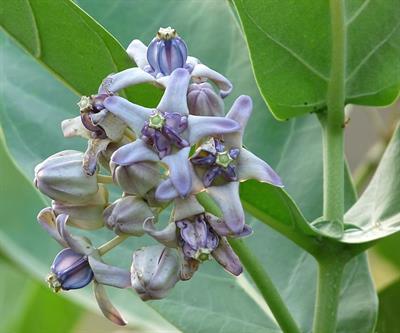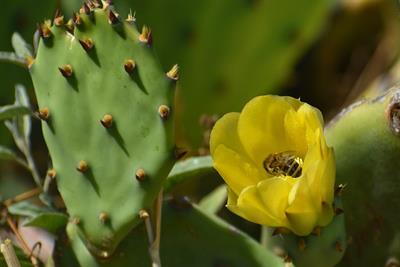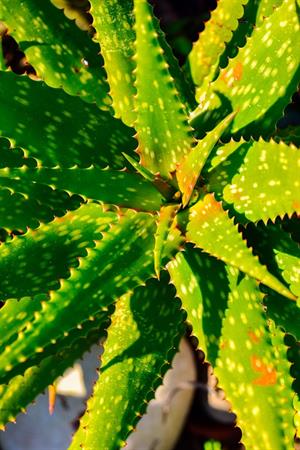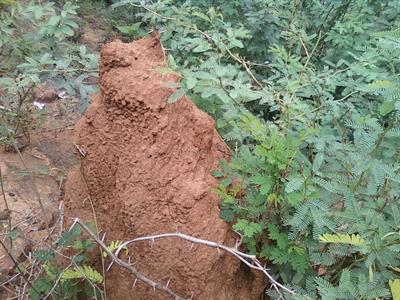PDF chapter test TRY NOW
Plants that grow in dry habitats or xeric conditions are called xerophytes.
The plants develop special structural and physiological characteristics to suit the following conditions:
1. To absorb as much water as they can from the surroundings.
2. To retain water present in their organs for a longer time period.
3. To reduce or minimise the rate of transpiration.
4. To reduce the usage or consumption of water.
Adaptations present in Xerophytes plants:
The morphology of the xerophytes has been modified to suit the needs of the habitat. The xerophyte plants have:
1. Well developed roots: The roots are well developed and branched to a greater extent. The roots grow very deep into the earth and reach layers where water is available in plenty. There is the presence of root hairs developed densely, which enables the root to absorb a sufficient quantity of water. Examples include Calotropis.

Calotropis
2. In Opuntia and Aloe barbadensis miller (Aloe vera), there is succulent stems and leaves which contains parenchymatous tissues. The parenchymatous tissues help to store an excess quantity of water. This makes the stem swollen and fleshy.

Opuntia

Aloe vera
3. In many xerophytes, the leaves are reduced and small-sized with thick cuticles and dense, waxy coating. Examples include acacia.

Acacia arabica
While in some plants like Opuntia, the leaves are reduced and modified as spines.
4. Some xerophytes are short-lived. During the critical dry periods, it survives in the form of seeds and fruits with hard, resistant seed coats. When the favourable condition begins (very short duration), the seeds germinate into new plants, which complete the life cycle (when sufficient moisture is available).
Reference:
https://commons.wikimedia.org/wiki/File:Calotropis_gigantea.jpg
https://pixabay.com/de/photos/opuntia-blume-kaktus-natur-pflanze-6310632/
https://www.maxpixel.net/Aloe-Barbadensis-Miller-Aloe-Vera-Plant-Leaves-6494483
https://commons.wikimedia.org/wiki/File:Shrub_of_acacia_arabica_and_anthill_at_Kambalakonda_Visakhapatnam.jpg
